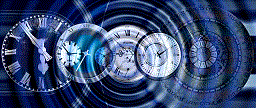History of Relativity (Review)
Relativity
1. There is much talk today of relativity. The general public (which is not usually concerned with physical theories) become interested in this doctrine mainly because of its proposals of paradoxical allure that are found here. This theory brought a modification mainly in the fundamental conceptual ideas of the humanity related to space and time. However, the philosophical questions regarding the nature of time and space are not new.
Aristotle
For Aristotle “Time is the a number relating to the movement, when we consider this (movement) as having a part before and a part which follows”. In his history of cosmological doctrines, Duhem paraphrase as follows “Time is thus what allows us to count the states taken by something moving and arranging these (states) in a certain order. Thus for ancien greeks, the notions of time and motion are linked one to the other. He is explicitly saying that “We measure the motion with time and the time with motion”.
The beginning
2. A question arises immediately: is it not that time is an idea conceived by the mind, or it has he an independent reality from that spirit? For Aristotle the second alternative is the one to adopt. He admits that in our reality existing things, time is a thing independent of all intelligence capable of counting (that’s what he called himself the “countable number” to distinguish it from the “number counted”). But now a serious difficulty becomes present (which is a relativity question). Because each movement can give us a concept of time, by considering various movements aren’t we given give different time(s)? Aristotle answer to this question was negative. He believed that he could establish that, whatever the movement, we still can set the same time, but his demonstration of this fact was not unanimously accepted.
The history
3. The New Platonic philosophers distinguished two different “times”. According to them, there is outside the physical time there is another time, which they call “the primordial time” that is the cause of the first. When they speak about the physical time, they are referring to the time of the moon, of the sun and of the planets (One can almost hear the modern relativists speaking of the local time 🙂 ).
The nature of time
These discussions on the nature of time began in antiquity and have never stopped during the middle age and modern times, and philosophers will still continue probably to discuss on its essence. (What we know for sure is that for Kant the space and time are a priori forms of our sensibility, forms through which we necessarily see the things around us, and this opinion was contradicted by the study of non Euclidian geometries). More recently, an essential distinction was made between the real duration (which is the time perceived by our consciousness, and the time present in the physics equations.
Modern times
4. Maybe this intro was not useless, because it is interesting to remember that some difficulties in what it concerns space and time, are not present from yesterday. The theory of relativity is very abstract, and it is an impossible enterprise to want to it expose with some precision without using mathematical symbols. As has been said, there are cases where it is easy to learn it with the help of mathematics than without. The first theory of relativity (Einstein’s special relativity ) requires just the presence of the mathematical elements.
Einstein Relativity
5. In our day by day life, we do not experience any difficulties in what it concerns space and time. He think that we have a very clear conception of the absolute space through which one body moves. This space is that on which are based our geometries. In what concerns time, speaking about this it flows in a regular and continuous way, independent of space and indifferent to physical phenomena.
The truth is that the definition of the unit of time is not without presenting some difficulties, requiring the assumption on equal durations of two identical phenomena looked. This is the point where the modern relativity comes into play.


